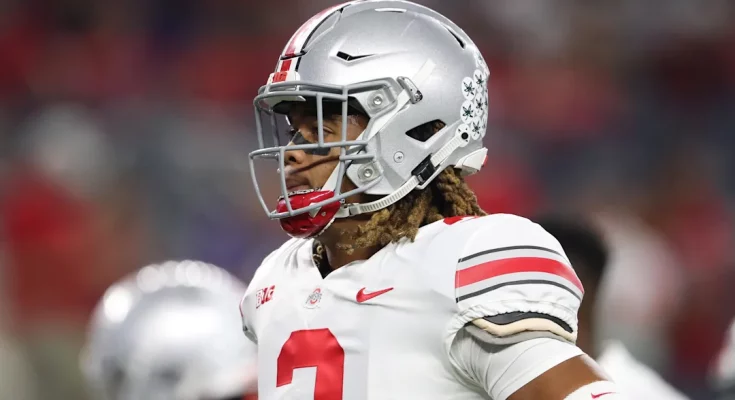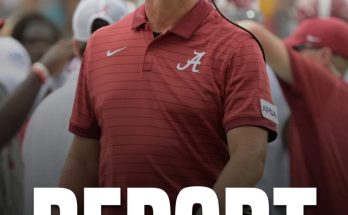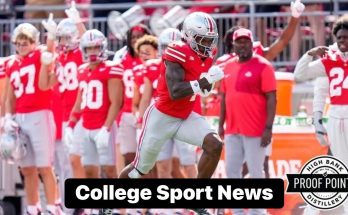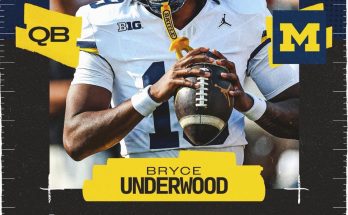Ohio State Buckeyes fans are fiercely loyal to their gridiron legends, especially those who take the next step and shine in the NFL. But sometimes, admiration for a player’s college achievements doesn’t shield them from scrutiny when they reach the professional level—especially when an eyebrow-raising NFL contract enters the conversation. That’s exactly the case now with former Ohio State standout Chase Young, who recently found himself at the center of a storm after signing an enormous new deal in the NFL. Though his pedigree and potential are undeniable, critics have begun shredding the deal online and in sports circles, questioning whether the investment matches the performance.
Once viewed as a generational defensive talent and a can’t-miss NFL prospect, Chase Young was the pride of the Buckeyes’ defense under Urban Meyer and Ryan Day. Dominant, explosive, and utterly disruptive, Young terrorized Big Ten offenses during his college days, collecting accolades, awards, and Heisman votes—unheard of for a defensive end. That dominance turned him into the second overall pick in the 2020 NFL Draft by the Washington Football Team (now the Commanders), where he was expected to become one of the league’s premier pass rushers and a face of a new era in D.C.
Initially, things went according to script. Young delivered a promising rookie campaign, racking up 7.5 sacks, four forced fumbles, and earning Defensive Rookie of the Year honors. He was immediately seen as a cornerstone player, a defensive menace who could wreak havoc for years to come. His blend of power, speed, and motor had analysts salivating over his long-term potential. His leadership and intensity were apparent, echoing what fans had seen in Columbus. But what followed that impressive rookie year has been, at best, uneven and injury-plagued.
A torn ACL in 2021 derailed his sophomore season, and even after returning, Young didn’t resemble the explosive athlete he once was. Over the next two years, his production dipped, his on-field presence diminished, and frustrations grew. In 2023, he was traded to the San Francisco 49ers, where he joined a loaded defensive line and had moments of promise, though he didn’t fully reestablish himself as the fearsome edge rusher he had once been.
Despite all of this, Young signed a massive new deal in free agency ahead of the 2025 season, a move that stunned NFL observers and instantly drew fierce criticism. The New Orleans Saints, in desperate need of defensive line help and seeking to reenergize their franchise identity, opened their wallet and awarded Young a five-year, $135 million contract, including $82 million guaranteed. It’s a blockbuster deal—one typically reserved for proven perennial All-Pros—and one that many believe is based more on projection and past reputation than recent production.
Immediately after news of the contract broke, analysts across major networks were left scratching their heads. On ESPN, former NFL player and current analyst Ryan Clark called the deal “one of the riskiest gambles in recent memory,” emphasizing that Young has not played a full healthy season since 2020. Others like Fox Sports’ Colin Cowherd questioned whether Young had even shown the same level of fire and consistency in San Francisco, noting that “even in that stacked Niners defense, he wasn’t a game-wrecker.” Online platforms like Twitter (now X) erupted in polarizing opinions, with some fans defending the signing on the grounds of upside and potential while others called it “financial malpractice.”
The backlash wasn’t just from media figures and fans of other teams. Even some within the Saints’ fanbase expressed skepticism. “You can’t pay someone All-Pro money for being a YouTube highlight from 2019,” one comment read on a Saints Reddit forum. “We need durable, consistent playmakers. Chase Young has been anything but that for three years.” Others noted that the Saints’ cap situation was already stretched and that giving a high-risk player like Young such a lucrative deal could hamstring their ability to address other roster holes.
For Ohio State fans, the moment has brought mixed emotions. There’s immense pride in seeing a Buckeye cash in and be recognized on such a grand stage, but also concern that the deal could become a cautionary tale if Young doesn’t deliver. In Columbus, Young remains a legend—a player who gave everything on the field, who embodied Buckeye toughness and swagger, and who made fans believe every snap could turn into a sack. But in the NFL, reputations are fleeting, and patience is thinner. The pressure of living up to a $135 million contract is a different beast altogether.
It’s worth noting that the Saints’ front office isn’t entirely delusional. They’re banking on the idea that Young, now a few years removed from his major injury, is ready to bounce back. They believe that pairing him with another strong interior rusher and giving him a clean bill of health could reignite his early-career form. Young himself has expressed confidence, telling reporters during his introductory press conference, “I’ve been doubted before. I’m used to proving people wrong. I’m healthy, I’m hungry, and I’m ready to get to work.”
To his credit, Young has handled the criticism with poise. He’s taken the high road, refusing to engage in any verbal sparring and instead focusing on what lies ahead. “I know what I’m capable of. The people closest to me know what I’m capable of. The rest will come,” he said. Still, his calm demeanor and well-crafted PR lines don’t quiet the growing expectations. In a league where edge rushers are now asked to do everything—set the edge, rush the passer, and even drop into coverage—Young will need to show he can consistently impact games again, not just flash once every few weeks.
Perhaps most frustrating for critics is the notion that there were other, less risky options on the free-agent market or even via trade. Players with cleaner medical histories and more consistent production were available at a lower price point. Some suggest the Saints were enamored by Young’s name value and college legacy rather than doing a sober evaluation of recent tape. And that’s where the criticism becomes most pointed—when teams start throwing massive contracts at players based on what they used to be rather than who they are now.
What happens next will largely determine how this saga is remembered. If Young returns to form and delivers double-digit sacks, pressures, and game-changing plays, the Saints will look like geniuses who took a calculated risk that paid off. If he struggles, misses time, or fades into rotational duties, the contract will become an albatross and a punchline on sports talk radio. For now, the spotlight is squarely on him, and the pressure is immense.



